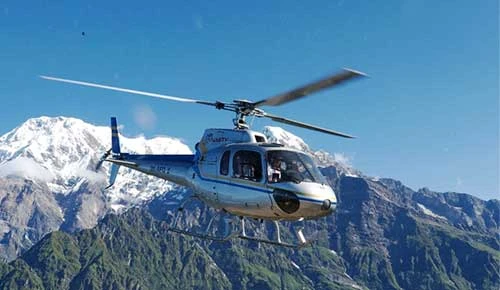Lake Mansarovar Travel Guide: Beauty, Belief, and Beyond
One of the world's most sacred and stunning high-altitude lakes, Mansarovar is nestled majestically in the upper regions of the lush Tibetan Plateau in proximity to Mount Kailash. At a staggering elevation of nearly 4,590 m (15,060 ft), it stands not only as a magnificent geographical marvel but also as a deeply revered pilgrimage site for followers of Hindu, Buddhist, Jain, and Bon religions.

The lake's turquoise water, awe-inspiring landscapes, and intense spiritual vibes attract thousands who visit every year in search of some inner peace and an outer splash of adventure. This travel guide will take you beyond the beauty and spirituality that adorn the lake while sharing important travel tips on arranging a once-in-a-lifetime visit to this timeless sanctuary.
Table of Contents
Spiritual Significance of Lake Mansarovar
For four great religions—Hinduism, Buddhism, Jainism, and Bon—Lake Mansarovar has great spiritual significance, with deep symbolic and mythological meanings attached to its serene waters. Hindus believe that the lake was created by Lord Brahma, while it is closely associated with Lord Shiva, who is believed to dwell near Mount Kailash. Bathing in the lake along with the drinking of water from it cleanses the sins of the mortals and provides them with liberation, the moksha.

According to Buddhist beliefs, Lake Mansarovar is called Anavatapta, as it is around the lake that Queen Maya is supposed to have conceived the Buddha. Jaina scriptures record it as the place where Rishabhadeva, the first Tirthankara, attained spiritual liberation. Pilgrims from all over the world gather here to circumambulate (parikrama) around the Mansarovar lake, meditate on the shorelines, and feel the divine energies bridging physical dimensions-Lake Mansarovar is thus more than a place; it is a power of spiritual realization.
Natural Beauty and Geography
The Mansarovar lake is situated high up in the Himalayas at an elevation of around 15,060 feet (4,590 meters) above sea level in western Tibet, close to the base of sacred Mount Kailash. Spreading over an area of almost 320 square kilometers, the perfectly round lake stands for ultimate purity and spiritual completeness.
The lake waters supply a surreal, mirror-like ambience that changes color through each hour of daylight, reflecting in tribute to the skies or the icy mountain peaks. A perfect view for long, meditative moments, especially at sunrise or sunset, the calm blue-green water appears to shower a magical golden light down. In contrast to this in almost every way, physically as well as symbolically, lies the close neighbor: a saltwater lake, Rakshas Tal, which, according to Hindu mythology, portends doom.

Magnificently, these twin lakes depict the tournament of light against darkness, purity against power. The terrain that edges the show is big, lonely, and mostly unexplored-so it not only offers incredible scenic vistas but also coaxes any search for solitude some few places will intervene on Earth.
Highlights Around the Mansarovar Lake
Being in the Mansarovar Lake area offers a very spiritual and scenic experience. Setting aside the very holy waters of the lake itself, the surrounding areas remain dotted with cultural points, sites of meditation, and panoramic vistas that provide ample nourishment to every visitor's journey.
- Parikrama of the lake on foot or by any vehicle
- Holy dip and water rituals performed by pilgrims
- Stunning views of Mount Kailash from the shores of the lake
- Chiu Monastery located atop a hill overlooking the lake
- Calm reflections of the sunrise and sunset upon the waters
- Presence of migrating birds such as bar-headed geese
- Simple and spiritual campsites for overnight stays
- Interaction with fellow pilgrims and Tibetan culture
- Stargazing on clear skies at high altitudes
- Contrasting views are offered by nearby Rakshas Tal
Travel Experience and How to Get There
The way to Lake Mansarovar is an amalgamation of physical endurance alongside spiritual patience. From what it can offer, it certainly remains an everlasting, oft-repeated experiential passage through some of the earth's most remote and awe-inspiring terrains. There are primarily three ways people can access this serene lake: through Nepal, India, or Tibet (China). The most common and picturesque route is by land from Kathmandu, Nepal, through a journey to the Nepal-Tibet border (Kerung) and then onwards with a guided tour through the Tibetan plateau heading towards Mansarovar. Pilgrims from India generally abide by government-organized routes like the Lipulekh Pass (Uttarakhand) or Nathu La Pass (Sikkim), which need pre-booking and clearances.

Foreigners need to get a Chinese Group Visa and a Tibet Travel Permit, usually arranged by authorized tour operators. Tourists generally travel with their jeeps or buses, which are equipped with support staff because of the demanding high-altitude terrain. The travel itself is quite tiring, with long drives and thin air; the spiritual energies, however, energize everyone, and the raw beauty of nature on the way invigorates each mile. The preferable time to undertake this pilgrimage is from May to September because, in these months, the weather is mostly clear and friendly to travelers.
Accommodation and Facilities Near Mansarovar Lake
At Lake Mansarovar, you do not find luxury hotels; however, there are basic places good enough to get a sound rest. Most travelers prefer staying in simple guesthouses or small lodges in nearby places like Darchen or Chiu Monastery. Basic rooms with beds and warm blankets are available here, often with shared toilets.
During the peak pilgrimage season, from May to September, the local operators also put up some temporary tented camps for the visitors. You very comfortably get to sleep, eat, and relax under these tents before or after your visit to the lake.
Keep in mind limited electricity and internet availability, so sometimes it might be up to you to locate a source of hot water. Prepare yourself for basic services; pack your toiletries, a power bank, and, well, a sleeping bag for extra warmth if you need it.
Well and bottled water is usually what is drunk; avoid drinking from taps or from the lake directly. Meals are mostly plain vegetarian food; rice, soup, and noodles are available, especially through the yatra season.
Just so you know, what is offered around Lake Mansarovar is far from fancy; however, they are still suitably comfortable for the traveler and pilgrim involved in this once-in-a-lifetime journey.
Conclusion
A visit to Lake Mansarovar is more than just a trip—it's an experience that touches your soul. The lake provides this deep sense of peace, engulfed in the silence of the Himalayas and the sacred energy of Mount Kailash, which stays with you for a long time. Whether you go for spiritual reasons, or for its sheer natural beauty, or maybe for the sheer adventure, Mansarovar has a special way of interfacing with the enormous force beyond. It's not the easiest place to reach, but that's what lends it significance. The Mount Kailash Yatra package is the perfect trip for an aspirant that incarnates the union of faith, nature, and inner self.
Book your Mount Kailash Yatra today and commence the first step of a truly life-evolving pilgrimage!








